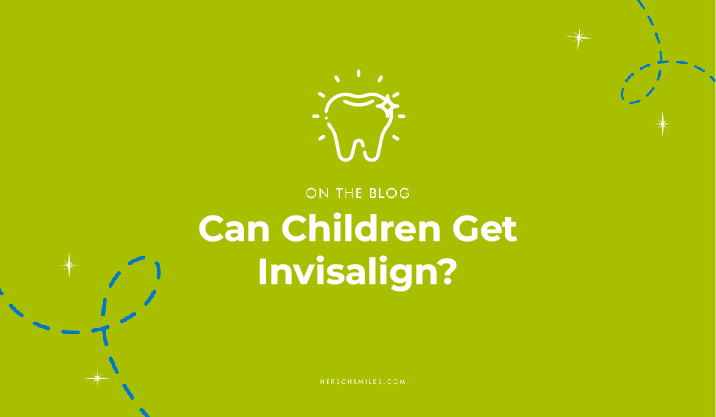Many people mistakenly believe that children can’t have braces or aligners because they still have their baby teeth. In fact, the best time for orthodontic treatment is between 8 and 14 years old. Because the bones and teeth aren’t done growing, they will more easily reposition.
However, it may be a good idea to talk with your child to decide if they can be responsible enough to take care of their aligners. Invisalign aligners are removable, and therefore, easy to lose. As they can be more expensive than braces, this may be a dealbreaker for some.
Invisalign Takes More Responsibility Than Braces
Taking care of braces is fairly straightforward. Your child only has to avoid hard and sticky foods and practice good oral hygiene. It’s a bit tricker with Invisalign. Since they’re removable, they’re not just easier to lose. The aligners can be uncomfortable, and for some children, they may be a source of insecurity. You’re putting a lot of trust in them that they will wear them when they’re supposed to.
If you’re willing to provide extra support, or if you trust your child to take care of their Invisalign, then they’re still a great option for all ages.
Invisalign Teen Can Help With Accountability
To track compliance with Invisalign treatment, new technology allows parents and orthodontists to track how often children are wearing the aligners. With Invisalign Teen, there is a dot on the back of each aligner that changes colors the more often they’re worn. If they’re worn often, the color will change to clear.
Children Can Still Have Invisalign Without Their Permanent Teeth
If your child hasn’t lost all of their baby teeth, they can still have Invisalign. In fact, it’s better for their long-term health to correct their baby teeth before adult teeth erupt.
A child’s baby teeth act as guides for adult teeth. They show them where and how to grow. In a way, the aligners are working on two sets of teeth at once.
What if They Lose a Tooth During Treatment?
It can be disconcerting to know that your child has an empty space in their mouth when aligners are pulling and adjusting on each side. You may be wondering if their Invisalign will force surrounding teeth into the open space. Thankfully, you don’t have to worry about teeth taking over where they shouldn’t.
Whether your child loses the tooth prematurely or not, Invisalign will only make it easier for adult teeth to grow in. No space maintainers are needed to keep teeth in their proper position.
What if They Have or Develop Cavities?
Ideally, your pediatric dentist will do a teeth cleaning and repair any cavities before starting Invisalign. The teeth need to be in good condition beforehand. If cavities develop in the middle of treatment, they can easily be filled or repaired. Invisalign works just as well on teeth that have fillings, inlays, or crowns.
The aligners are made to fit the exact shape of your child’s teeth, though. If they do need a cavity repaired, they may also need new aligners to fit the changed shape of their tooth.
Visit Hersch Pediatric Dentistry and Orthodontics
Because we perform dentistry and orthodontics in the same office, our team will be aware of any previous conditions that may impact the success of your child’s treatment. We aim to create a healthy foundation for your child’s smile, so we will support every aspect of their oral health from cleanings to fillings to braces and more.
To schedule an appointment, call 949-749-5389.

